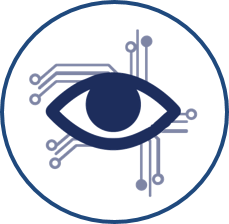 Visual Intelligence lies at the intersection of three multi-industry disrupting trends - artificial intelligence, computer vision and analytics. Just last month, Intel confirmed taking a 15 percent stake in HERE, the mapping and location services company owned by a consortium of car manufacturers, which are evolving into software companies as they collect, process and act upon not only street and location data, but also object, vehicle, human, and animal behavior.
Visual Intelligence lies at the intersection of three multi-industry disrupting trends - artificial intelligence, computer vision and analytics. Just last month, Intel confirmed taking a 15 percent stake in HERE, the mapping and location services company owned by a consortium of car manufacturers, which are evolving into software companies as they collect, process and act upon not only street and location data, but also object, vehicle, human, and animal behavior.
Billions of images stored on eBay can now be intelligently analyzed and classified with the help of Corrigon, an image recognition and visual search technology company. Netgear’s acquisition of Placemeter integrates proprietary computer vision algorithms into its Arlo Smart Home security product. There is no end in sight for Visual Intelligence, as it is set to transform nearly every sector. For example, new software technologies built into cameras will find their way to drones, which collect and monitor complex data regarding the health of crops autonomously.

Facial recognition is taking huge leaps forward beyond biometrics, so that multiple faces can now be quickly ascertained from a single image and cross-referenced with law enforcement databases, making vulnerable and high trafficked public spaces more secure.
We’ve just scratched the surface of Visual Intelligence’s capabilities, and you can expect this trend to be a major disruptor in the coming year as more possibilities are uncovered and major players bulk up their own offerings by acquiring smaller companies, as seen with Corrigon and Placemeter. What else can we expect from this year’s Disruptive Tech Trends? Keep an eye here to find out.
